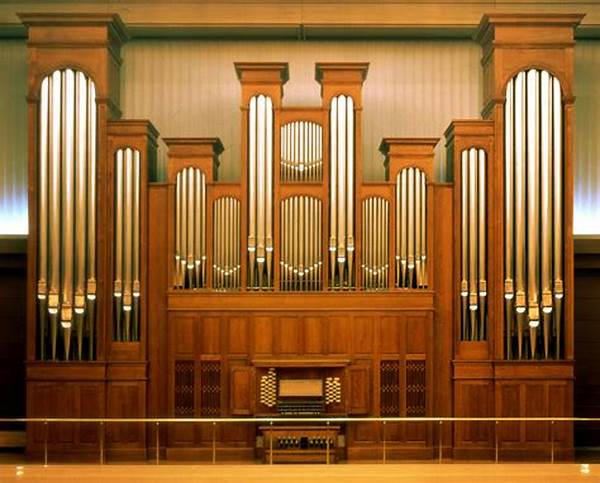Step into a world where the power of sound reigned supreme, a time when a single musical instrument could elevate the simplest of scenes into heart-wrenching drama or side-splitting comedy. The organ, though a staple in churches and concert halls, found its unexpected partner in the silent film era, captivating audiences with its stunning ability to narrate, emphasize, and transform the moving image. Why was the organ so profoundly impactful? It wasn’t just its ability to create intensely dramatic effects; it was its unique selling proposition — the ability to evoke a gamut of emotions silently.
Read More : Traditional Musical Instruments From Indonesia
The silent film era, ironically enough, was one where sound played a pivotal role in audience engagement. Before technology allowed recorded dialogue, live music was pivotal in conveying mood and underscoring the narrative. Enter the organ, with its rich tones and dynamic range capable of switching from thunderous crescendos to gentle lullabies. It draped a magical cloak over the cinemas, guiding emotions and making audiences laugh, cry, or gasp in suspense without uttering a word — a testament to its persuasiveness and dramatic effectiveness.
The Mighty Wurlitzer: The King of Cinema Organs
Considered the crown jewel of silent cinema, the Wurlitzer organ became synonymous with theaters worldwide. Its expansive capabilities and lush soundscapes made it a beloved fixture in movie palaces. Unlike a mere piano, the Wurlitzer could replicate myriad instruments and sound effects — from chirping birds to roaring thunder — all adding depth and drama to the cinematic experience. Imagine sitting in a darkened theater, the flicker of the screen illuminating faces, while the organ envelops you in a symphony of sound.
How Organs Transformed Silent Cinema
The incorporation of organs into silent films was not merely an add-on but rather a transformative tool that redefined storytelling. The organ’s ability to encapsulate every emotion, be it love, fear, suspense, or joy, made it indispensable. Filmmakers and audiences alike hailed the organ for its narrative prowess, adding layers to simple plots and ensuring the emotional journey was as long-lasting as it was impactful.
The Dual Role: Entertainment and Art
Somewhere between a performer and an orchestra, organists were the unsung heroes of the silent film era. Their ability to improvise and choose the perfect moments for dramatic effects played a crucial role in the entertainment value of each show. These organists enriched every performance by bringing films to life, ensuring that each note played was as significant as the images projected on the screen. The organ was more than just an instrument; it was art in its own right — crafting unforgettable cinematic experiences.
The Profound Impact on Audience Engagement
The organ musical instrument loved for dramatic effects in silent films was particularly adept at audience engagement. It took charge of a cinema’s atmosphere, forging a connection with the viewers that enhanced their engagement with the film’s narrative. A suspenseful chase across the screen was heightened by the urgent chords of the organ, compelling audiences to sit on the edge of their seats. Comedies, meanwhile, found their playful echo in light-hearted melodies, satisfying the human desire for enjoyable experiences.
Bringing Humor into the Frame
A perfectly timed organ riff could transform a simple gag into a memorable comedic moment. Much like a stand-up comedian’s punchline, these musical interludes added a layer of humor that transcended the limitations of the silent film format. The remarkable dexterity of the organ allowed for quick shifts between dramatic and comedic scenes, showcasing its versatility and indispensable role in creating the intended emotional effect.
A Testament to Musical Innovation
Silent films found their voice through musical innovation, with organists experimenting and adapting to create dynamic soundscapes that brought films to life. By harnessing this creative tool, they elevated the art of musical storytelling, influencing the way films would be scored in future generations. The artful manipulation of the organ echoed throughout the theater, a myriad of emotions spilling over, engaging both heart and mind.
Read More : Review Of Mahogany Kalimba Instruments For Music Therapy
The Lasting Legacy of the Organ in Film
Today, as we look back on the legacy of the silent film era, the organ stands out as a timeless figure of innovation and artistry. Though technology has advanced and the era of silent films has long passed, the influence of the organ persists in countless ways across modern cinema.
Learning from the Past for the Future
Studying this era offers invaluable lessons in creativity and engagement. The organ showed us that even in silence, sounds could be our most effective storyteller. Filmmakers today can learn much from this era by understanding how simple yet powerful instrumental storytelling can enhance the viewer’s immersion and perception.
An Enduring Tribute
Though no longer a mainstay in theaters, the organ continues to captivate audiences in concert settings and occasional film presentations. It serves as a tribute to an innovative era where musicians tirelessly worked behind the scenes, marrying sound and images into an unspoken dialogue of human emotion.
Ultimately, the organ musical instrument loved for dramatic effects in silent films remains a hallmark of cinematic innovation, a testament to the ways music can transform narrative into an emotionally evocative experience. As we explore this legacy, we are reminded of the timeless power of music and its ability to articulate the inarticulable, transcending generational shifts and continuing to inspire awe and admiration.
